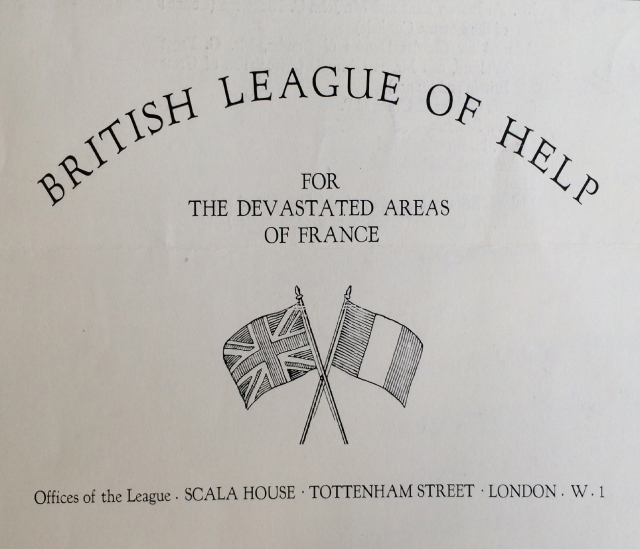After the war, many French towns and villages lay in ruins. Rebuilding them would require time, effort, and money … which is where East Sussex stepped in. 
Whilst the Armistice in 1918 brought an end to the fighting, it was not the end of the suffering for many people in Belgium or Northern France. Over four years of fighting and military occupation had left the towns and villages around the front lines devastated and thousands of civilians without homes and possessions.
Whilst the French government would use the reparations secured from Germany to begin the process of rebuilding, the task was mammoth and funds were scarce. But there were soldiers and families from Britain who had formed a connection to France and particular towns or areas because of the war.
The Cost of War
The nature of the fighting meant that, particularly in 1916, casualties amongst British soldiers were often very specific in geographic terms on both sides of the channel. Soldiers in Pals Battalions were drawn from the same communities and, when they suffered casualties, tended to be in large numbers at very specific places.
The Battle at the Boars Head was so disastrous for the men of the Royal Sussex Regiment ‘Southdowns’ Battallions and a prime example of this. Here, at least 366 men from the south coast had died in action near Richebourg l’Avoue. Similar stories regarding other Pals Battalions and French towns were commonplace. If these towns were not rebuilt after the war, then what had it all been for?
Therefore, in the early 1920s the British League of Help began the process of temporarily ‘adopting’ French towns. These adoptions were often focused on those towns where local soldiers had fought and died. Richebourg itself was adopted by Worthing. This assistance manifested itself in the form of ‘tools, seeds, blankets and clothes’. Elsewhere, Bexhill adopted the town of Bayencourt in Northern France which had seen heavy fighting in 1916. A remnant of this link still exists in Bexhill today.
Bray-sur-Somme had been almost destroyed by the years of fighting and was adopted post-war by Eastbourne. The Maire (Mayor) of Bray was an invited guest to Eastbourne on Remembrance Day 1921 were he was presented with a war medal and 3,000 francs to aid the rebuilding efforts.
East Sussex Responds
This financial support provided by Britain, continued during the 1920s but by the 1930s had almost entirely stopped. The passage of time since the end of the war, having moved most people away from the desire to continue financial support of France. Additionally, the Great Depression and changing international situation also proved a difficult obstacle to overcome. 
However, some links and friendships did endure and there were joint visits between adopted towns into the 1930s. The fields around Richebourg, Bayencourt and Bray-sur-Somme had held the bodies of Sussex men who had fought and died to protect them. The work done during the war had been further bolstered by that done during the peace.
Sources
Sussex Daily News
Sussex in the First World War by Keith Grieves










